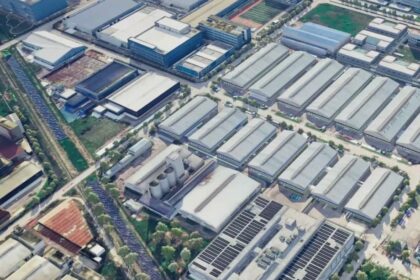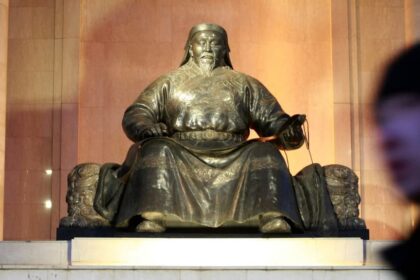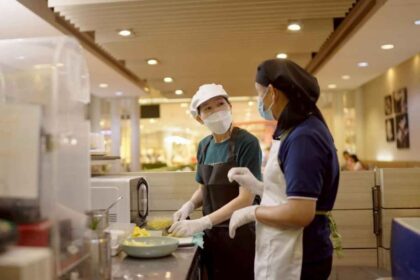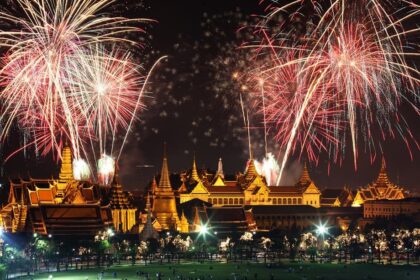Massive Congestion at Shenzhen Bay Border: A New Normal for Holiday Travel?
In recent years, the Shenzhen Bay border crossing has become a focal point for travel between Hong Kong and mainland China, especially during weekends and public holidays. The surge in cross-border travel, particularly by Hong Kong residents seeking leisure, shopping, and family visits in Shenzhen and beyond, has led to severe congestion and long wait times at key border checkpoints. The situation reached a boiling point during recent holiday periods, with thousands of travelers facing hours-long delays, traffic jams, and logistical headaches as they attempted to return to Hong Kong.
- Massive Congestion at Shenzhen Bay Border: A New Normal for Holiday Travel?
- What Drives the Surge in Cross-Border Travel?
- Scenes of Chaos: Long Queues, Traffic Jams, and Frustration
- Why Is Shenzhen Bay So Congested?
- Official Responses and Mitigation Measures
- Voices from the Front Lines: Travelers and Transport Workers Speak Out
- Broader Implications: Economic, Social, and Urban Planning Challenges
- Looking Ahead: Solutions and Future Developments
- In Summary
What Drives the Surge in Cross-Border Travel?
Several factors have contributed to the dramatic increase in cross-border movement:
- Proximity and Convenience: Shenzhen is just across the border from Hong Kong, making it an attractive destination for short trips, shopping, dining, and entertainment.
- Economic Integration: The Greater Bay Area initiative has fostered closer economic and social ties between Hong Kong, Macau, and cities in Guangdong province, encouraging more frequent travel.
- Holiday and Weekend Escapes: With the reopening of borders post-pandemic, Hong Kong residents have flocked to the mainland during long weekends and holidays, such as Labor Day, Easter, and the Mid-Autumn Festival.
- Family and Social Visits: Many Hong Kongers have family or business ties in the mainland, further boosting cross-border traffic.
During the recent Easter and Labor Day holidays, official statistics showed that over 600,000 border crossings occurred in just a few days, with the majority using land checkpoints like Shenzhen Bay, Lok Ma Chau, and Lo Wu. On peak days, more than 90,000 people entered Hong Kong, with Shenzhen Bay handling a significant portion of this flow.
Scenes of Chaos: Long Queues, Traffic Jams, and Frustration
Social media platforms and news outlets were flooded with images and accounts of the chaos at border crossings. At Shenzhen Bay, travelers described scenes of “human dragons”—queues stretching for dozens of meters, with thousands waiting to clear immigration or board shuttle buses. Some reported waiting over an hour just to pass through customs, while others faced traffic jams that extended their journeys by several hours.
One traveler recounted:
“I had to wait nearly an hour just to get a taxi. The queue was endless, and the traffic outside the checkpoint was at a standstill. It was the worst congestion I’ve ever experienced at the border.”
Private car owners also faced gridlock, with some reporting that it took nearly three hours to cross the Hong Kong-Zhuhai-Macao Bridge and return to Hong Kong. The situation was exacerbated by the end of school exams, as many families took advantage of the holiday to travel north, filling up every available seat in private vehicles and public transport.
Why Is Shenzhen Bay So Congested?
The congestion at Shenzhen Bay is not a new phenomenon, but it has become more severe due to several structural and operational challenges:
- Overcapacity: The checkpoint was originally designed to handle about 60,000 crossings per day, but current daily averages often exceed 90,000, especially during peak periods.
- Insufficient Transport Infrastructure: The surrounding roads and public transport facilities are frequently overwhelmed, leading to long waits for taxis, buses, and private vehicles.
- Poor Traffic Management: Illegal parking, unauthorized pick-ups, and a lack of clear traffic flow contribute to bottlenecks and confusion.
- Limited Alternative Routes: While there are several border crossings, many travelers prefer Shenzhen Bay for its convenience, further concentrating the flow.
According to local officials and transport experts, the combination of high demand, inadequate infrastructure, and poor coordination among different modes of transport has made congestion a “new normal” at Shenzhen Bay, especially on weekends and holidays.
Official Responses and Mitigation Measures
Authorities on both sides of the border have acknowledged the problem and implemented a range of measures to alleviate congestion:
- Real-Time Information: The Hong Kong Immigration Department has launched a mobile app that provides real-time updates on wait times at all major border crossings, allowing travelers to choose less crowded routes.
- Increased Staffing and Facilities: During peak periods, additional immigration counters and staff are deployed to speed up processing.
- Traffic Control: Police and transport officials have stepped up efforts to manage vehicle flow, direct traffic, and prevent illegal parking or unauthorized pick-ups.
- Public Advisories: Authorities regularly issue advisories urging travelers to plan ahead, avoid peak hours, and consider alternative crossings such as Lok Ma Chau, Man Kam To, or the Hong Kong-Zhuhai-Macao Bridge.
Despite these efforts, the sheer volume of travelers often overwhelms the system. For example, during the recent Labor Day holiday, over 570,000 people were expected to use land crossings, with Shenzhen Bay, Lok Ma Chau, and Lo Wu each handling tens of thousands of entries and exits daily.
Voices from the Front Lines: Travelers and Transport Workers Speak Out
The frustration of travelers and transport workers has been palpable. On social media, many shared their experiences and called for better management:
“Why do we have to suffer through this every holiday? Can’t the authorities do more to coordinate traffic and provide more transport options?”
Taxi drivers and bus operators have also voiced concerns about the lack of facilities and the challenges of serving such large crowds. Some reported being unable to find passengers willing to pay high fares for long-distance trips, while others complained about the lack of designated pick-up and drop-off zones.
One bus driver described the scene:
“There were so many people waiting for the shuttle bus that we had to make multiple trips just to clear the queue. Some passengers waited over 45 minutes for a ride.”
Broader Implications: Economic, Social, and Urban Planning Challenges
The recurring congestion at Shenzhen Bay and other border crossings highlights broader issues facing the region:
- Urban Planning: The rapid growth of cross-border travel has outpaced the development of supporting infrastructure, leading to chronic bottlenecks.
- Economic Integration: While closer ties between Hong Kong and the mainland bring economic benefits, they also create new challenges in managing the flow of people and goods.
- Quality of Life: For residents living near border crossings, the constant traffic, noise, and crowds have become a source of frustration and complaints.
- Public Safety: Overcrowding and traffic jams increase the risk of accidents and pose safety concerns, especially during emergencies.
Experts have called for a comprehensive review of cross-border transport policies, better coordination among government agencies, and investment in new infrastructure such as expanded transport hubs, additional border crossings, and improved public transport links.
Looking Ahead: Solutions and Future Developments
To address the persistent congestion, several long-term solutions are being considered or implemented:
- Infrastructure Upgrades: Plans are underway to expand the capacity of key border crossings, add new transport facilities, and improve road layouts to better handle peak flows.
- Smart Traffic Management: The use of real-time data, digital ticketing, and automated systems can help optimize the flow of people and vehicles.
- Alternative Crossings: Encouraging the use of less crowded checkpoints and providing incentives for off-peak travel can help distribute the load more evenly.
- Public Education: Ongoing campaigns to inform travelers about the best times and routes for crossing the border can reduce pressure on the most popular checkpoints.
For example, the Shenzhen government is accelerating the construction of new transport hubs and expanding the metro network to connect directly with border checkpoints. The Hong Kong side is also investing in new facilities and improving coordination among different transport modes.
In Summary
- Shenzhen Bay and other border crossings have experienced severe congestion during recent holidays, with wait times often exceeding an hour and traffic jams stretching for kilometers.
- The surge in cross-border travel is driven by economic integration, leisure, shopping, and family visits, with over 600,000 crossings recorded during peak periods.
- Authorities have implemented real-time information tools, increased staffing, and traffic control measures, but the sheer volume of travelers continues to overwhelm the system.
- Travelers and transport workers have called for better management, more facilities, and improved coordination to ease congestion.
- Long-term solutions include infrastructure upgrades, smart traffic management, and public education to better distribute travel flows and enhance the cross-border experience.












